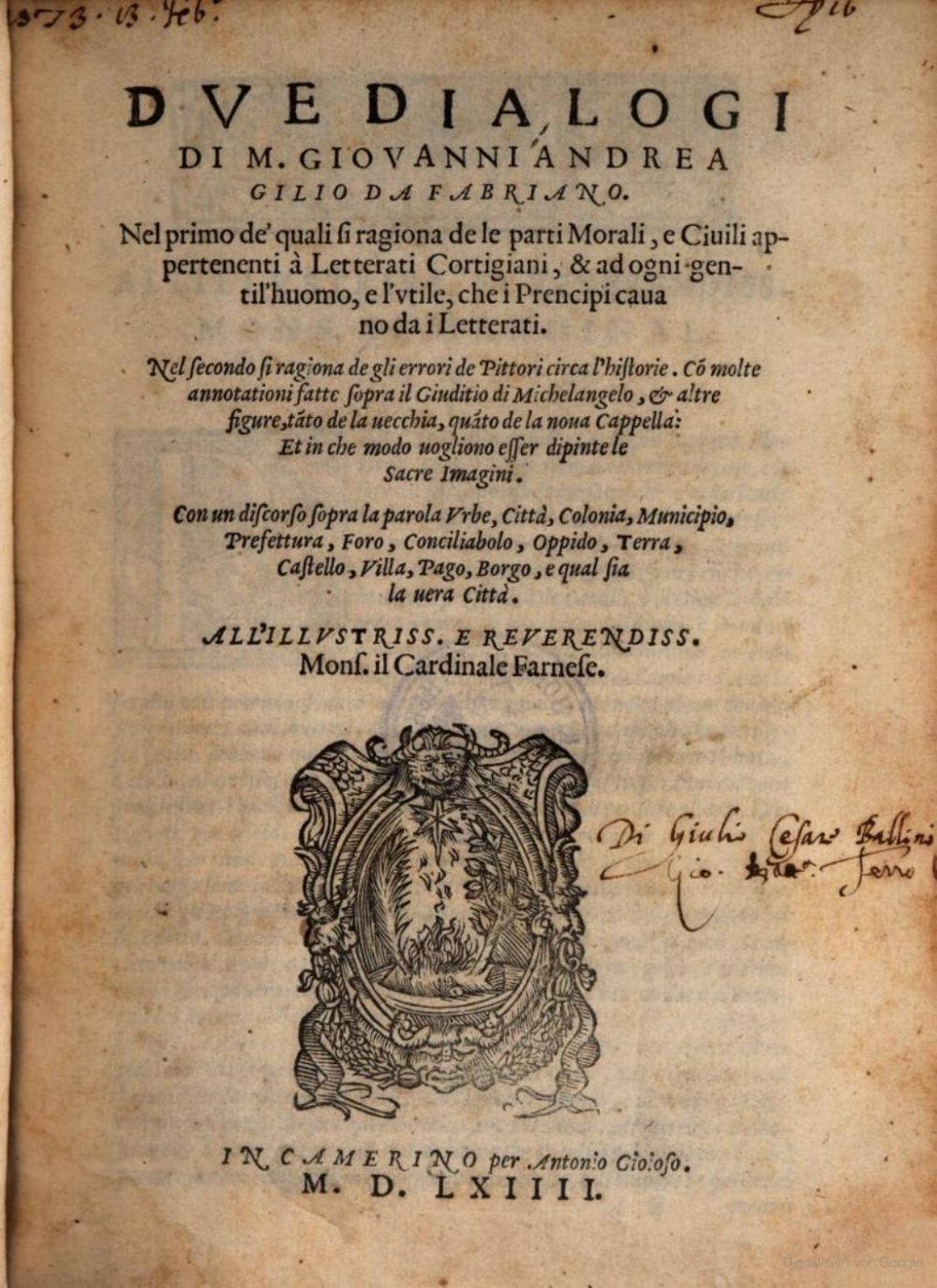
© ÖNB ABO Projekt/in Kooperation mit Google, Sig. 74.E.84 ALT PRUNK
Having previously criticised the graceful representation of the body of Christ in the Passion, the participants in the dialogue now offer the artist options in which he can demonstrate his skill, according to the iconography he is trying to represent.
“M. Troilo replied: ‘[…] If he (the painter) wants to show the delicacy of Christ’s body, its beauty, its grace, its muscles, as you said before, we have the mysteries of the Nativity, the Circumcision, the Adoration of the Magi to represent him as a sucking babe, beautiful and sweet. Then we have the Baptism in the Jordan as an opportunity to show him naked, where anatomy and all the secrets of the art can be displayed. There can be shown the perfection of intellect, the potency and power of beauty, the decorum of modesty, and the marvelousness of the holy. In the Flagellation, the Ecce Homo, the Crucifixion, the Deposition, and the Entombment there is the opportunity to show him bloody, ugly deformed, afflicted, emaciated, and dead. For showing him as glorious, divine, and in authority, we have the Transfiguration, the Resurrection, the Ascension and finally his coming to judge the living and the dead on the day of Judgement. These are the distinctions that the prudent painter must make’.”
“Replicò M. Troilo: ‘[…] Se vuol mostrare la delicatezza del corpo, la bellezza, la leggiadria et i muscoli, come dianzi diceste, abbiamo il mistero de la Natività, de la Circoncisione, de l’Adorazione de’ Magi, da farlo fanciulletto tettante bello e vago. Abbiamo poi, da farlo uomo nudo, il Battesimo del fiume Giordano, nel quale potrà mostrare la notomia e tutti i secreti dell’arte, la perfezzione de l’ingegno, la virtù e forza de la bellezza, il decoro de l’onestà e la maraviglia de la santità. Ne la Flagellazione, Demostrazione al popolo, Crocifissione, Deposizione de la croce e Sepultura, da mostrarlo sanguinoso, brutto, difformato, afflitto, consumato e morto. Per mostrarlo glorioso e divino e grande abbiamo la Transfigurazione, la Resurrezzione, le tante apparizioni che fece agli Apostoli, resuscitato che fu, l’Ascenzione et ultimamente il venire a giudicare i vivi et i morti il giorno del giudizio. Queste sono le distinzioni che far deve il prudente pittore’.”
Gilio 2018, 134-135, n.150



